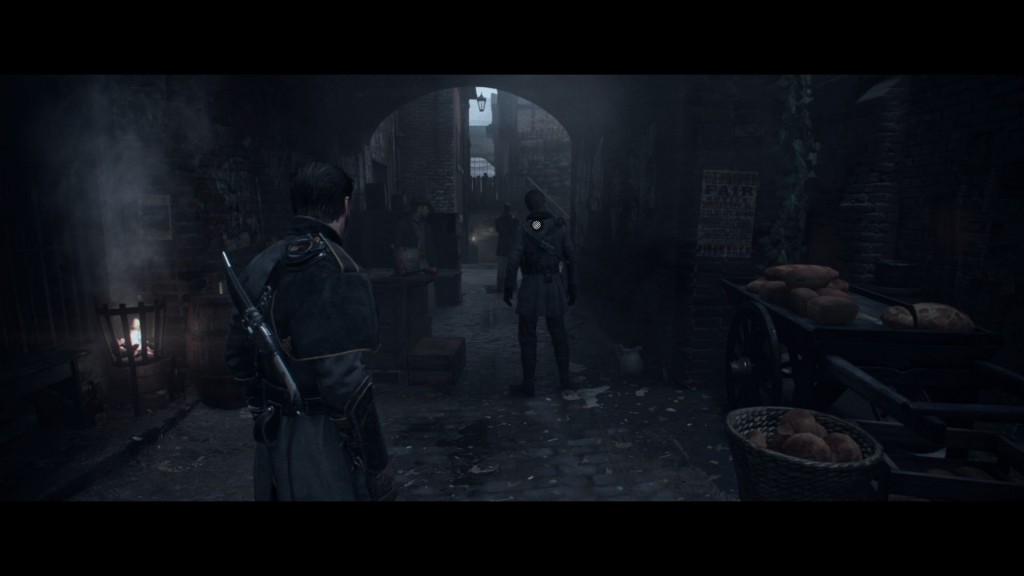
By late 2012/early 2013, the existence of the eighth-gen consoles was fairly well-established: Flashy titles like Crysis 3 and Far Cry 3 barely ran on seventh gen platforms and rumour mills were rife with insider reports about Projects Durango and Orbis, well underway at Microsoft and Sony respectively. (The overuse of Teraflops as a point of comparison in the gaming media can be traced back to those early reports about Orbis (PS4) 1.84 TF GPU compared to Durango’s (Xbox One) lesser 1.3 TF part. Peak compute isn’t a great way to compare the gaming performance of GPUs but that’s a whole other story.
In any case, Sony’s announcement of the PS4 at a special event in New York was more or less expected. What was surprising was the stunning eighth-gen gameplay and engine footage on display. Many iconic early PS4 titles were showcased at the demo and shortly thereafter. The generational leap was more than evident, whether we’re talking about Knack’s cartoon visuals comparing favourably with early Pixar titles, Infamous: Second Son’s incredible particle effects, or Driveclub introducing us to the wonders of dynamic global illumination. But before we go in depth with these visual spectacular launch titles, it makes sense to spend some time on the hardware transition from PS3 to PS4 that made them possible.
The move away from the PS3’s Cell/RSX combo to a more “normal” x86-based platform presented both new opportunities and new constraints. The PS3 had a powerful, multi-core processor, the CELL, paired with the RSX, a relatively weak GPU based on Nvidia’s G70 core which was dated even at the time of launch. If the rumours are to be believed, Ken Kutaragi initially didn’t even want the PS3 to have a GPU. He was convinced that CELL could handle rendering by itself. Feedback from first party developers, particularly Naughty Dog, resulted in the last-minute inclusion of the RSX.
The situation with the PS4 is inverted: It features a weak Jaguar-based CPU that AMD originally envisioned powering tablets, paired with a GPU that’s roughly on par with the HD 7870, an upper-midrange 2012 part. The CELL processor—and the Xbox 360’s Xenos—can take a good part of the blame for the open world-genre that’s gradually kept crept into games, largely because the seventh-gen’s powerful CPUs made possible the kind of lifelike world simulation on display in Rockstar’s finest, GTA5. Though newer by nearly a decade—eons in the tech space—the PS4’s Jaguar-based processor isn’t meaningfully more powerful than CELL, which actually outperforms it in certain use cases. A consequence of this CPU-side hardware stagnation is that, while graphics in open world titles have improved noticeably, world-simulation in eighth-gen titles isn’t drastically more complex than what was possible during last gen—to put it another way, many PS4 games look better than their PS3 predecessors, most still play the same. In the few cases where developers tried to push things forward—as with the ill-fated Assassin’s Creed: Unity, performance suffered for the worse.
This is not to say that Sony (and developers) haven’t found ways to compensate for the PS4’s mismatched hardware vis-à-vis the PS3. For starters, the API is enhanced. The PS3’s libGCM API already offered developers low-level access, critical to getting games running well on the PS3’s SPUs. With the PS4, while concern is less about having a difficult-to-program-for processor as it is about having a patently weak processor, the solution is much the same: libGNM, the PS4’s API is an updated version of libGCM, which gives developers enhanced low-level access to the PS4’s hardware and reduces the number of draw calls from the CPU, reducing the degree to which the Jaguar CPU bottlenecks the graphics hardware. In terms of efficiency, it offers even lower-level access than Vulkan. The Xbox One, on the other hand, shipped with DX11, part of the reason why multi-plats, at least in early days, did so much worse on the Xbox One than on PS4 (anyone remember Call of Duty: Ghosts at 720p and the related esRAM issues?).
Another way developers worked around the PS4’s weak CPU was with GPGPU—offloading world building, physics, and AI functions to the GPU—this was the exact opposite of the situation on PS3 where graphics functions were often offloaded to CELL to compensate for the weak RSX.
Apart from the massive jump in GPU capabilities, by far the largest change came in terms of the PS4’s massive (for the time) 8 GB GDDR5 memory pool. The PS3’s split memory architecture meant that the RSX only had access to 256 MB of VRAM. As a result, smaller framebuffer sizes were often used, meaning lower, sub-native resolutions in many cases —in Crysis 3, for instance, the PS3 operated at a measly 1024 x 720, whilst the Xbox 360 runs at a higher 1152 x 720. The PS4’s 8 GB memory pool is what allows it to run games at crisp, native 1080p, a hallmark of many PS4 exclusives that set apart PS4 launch titles from everything else in the console space at the time. And what of those titles? What kind of tech did they utilize to set them apart?
Of all the titles on display at the Feburary 20th announcement, Driveclub by far featured the most jaw-dropping visuals. While plenty of games this gen have implemented static Global Illumination to good effect, Driveclub is among a handful to implement dynamic GI with time-of-day changes. Global GI, alongside liberal use of screenspace reflections resulted in the game featuring gorgeous lighting and some of the best rain effects seen till date.
Every platform has its flagship, eyecandy shooter. Xbox has the Halo series. And Playstation has Killzone. The original Killzone on the PS2had fantastic visuals, though it was hampered by terrible performance. Killzone 2 and 3 were, despite the fantastical excess of that Killzone 2 “target render,” better-looking shooters than just about anything on the Xbox 360, barring Halo 4. Killzone: Shadowfall followed in that tradition. Despite being a launch title—not a mid-gen showcase—Shadowfall remains a graphical powerhouse on PS4. It was one of the very first games to fully utilize physically-based rendering, a technique that allows in-game materials to accurately reflect light, just like their real-life counterparts. PBR has since become a hallmark feature of eighth-gen, much like bloom lighting was for the seventh gen. During development, Killzone: Shadowfall also utilized an entirely new workflow which allowed for procedurally-generated animations—vastly more varied than before—and audio solution called MADDER (Material Dependent Early Reflections), which accurately simulated sound waves reflecting off various materials.
inFamous: Second Son—which actually made the PS4 launch window showcased visuals which were leaps and bounds above its PS3 predecessors. What was most noticeable with Second Son was its particle rendering system. While also utilizing PBR and screenspace reflections, what truly set Second Son apart was how its engine was able to handle thousands of individually lit particles simultaneously. Together with fully-shadowed fog and alpha effects, inFamous’ hallmark superpower-charged urban demolition was elevated to new heights.
The Order: 1886 was developed by Ready At Dawn, and judging by their past work, they clearly know how to squeeze every drop out of a Sony platform and nowhere is this more evident than in The Order: 1886. Tapping deep into the PS4’s GPU resources, Ready at Dawn aimed to create what it described as a filmic experience with The Order: 1886, complete with an ultrawide 2.4:1 aspect ratio. The game’s photorealistic visuals do justice to its filmic aspirations: it remains one of the best-looking titles on console (though Quantic Dream’s recently-released Detroit: Be Human features somewhat more detailed characters, we will be discussing about this in part 3 of this feature), thanks in large part to its excellent use of physically-based rendering. The game’s custom forward+ renderer is the best of both worlds—multiple dynamic light sources a la deferred rendering and a 4x MSAA pass for CGI-approximating AA.
Thanks to superior hardware, better API compared to the competition, and first-party studios dedicated to squeezing every drop of performance from it, the PS4 had a heady launch period with one graphical showcase after another. It’s no surprise, then, that globally it remains the fastest-selling console of all time.
Stay tuned for the third part of this series where we look at PS4 exclusive from mid-gen through the Pro era!


















